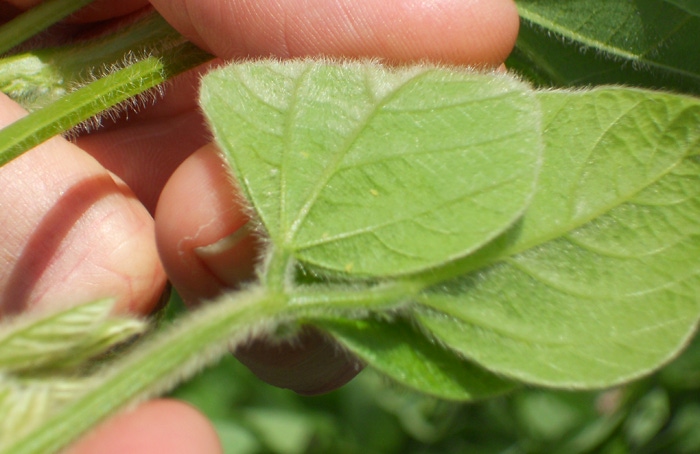August 16, 2011

Ohio State University received reports of soybean aphids being treated in northwest Ohio, with levels in most fields, while not being at threshold, are noticeable and rising. Growers throughout the state, especially in the north, should consider scouting their fields for the remainder of the summer. We suggest scouting throughout the state because in 2009 – the last year that we had aphids – we saw large populations in southern Ohio. While we cannot predict whether any area or field will have populations reaching threshold, the possibility exists.
Remember that the threshold for spraying (pdf) is an average of 250 aphids/plant with a rising population. This is the threshold for taking action, not the economic injury levels, which is in the vicinity of 700-900 aphids/plant. There is no need to spray prior to an average of 250 aphids/plant. However, in past years we have mentioned the existence of a sampling procedure called speed scouting that was developed at the University of Minnesota. This method suggests that when most of the plants have over 40 aphids/plant (e.g., 11 of 11 randomly sampled plants all have over 40 aphids/plant without any plants having below that number), treatment is warranted. In speed scouting, it is suggested that you should sample twice within 3-4 days, making a treatment decision each time, before actually making the choice to treat. For more information on soybean aphid speed scouting, see Iowa State University’s speed scouting brochure (pdf) and video.
Growers are also reminded that in dry areas of the state, two-spotted spider mites are still being found and should be watched closely. In addition, the various soybean defoliators that occur each summer are being found and warrant watching, including Japanese beetles, Mexican beetles, bean leaf beetles and grasshoppers. See our website for information on all of these pests. Finally, please remember guidelines for protecting honeybees when applying insecticides to soybean. According to Ohio law, if a pesticide is toxic to bees, it is the applicator’s responsibility to contact the beekeepers with registered apiaries (beehives) within ½ mile of the target area if it is more than ½ acre in size and the crop is in flower. Contact the Ohio Department of Agriculture for more information on apiaries in your area.
You May Also Like




